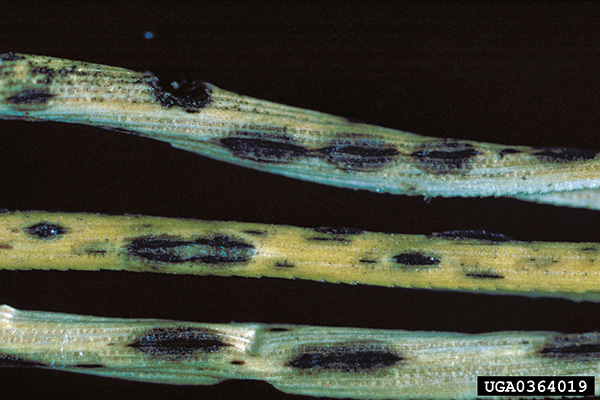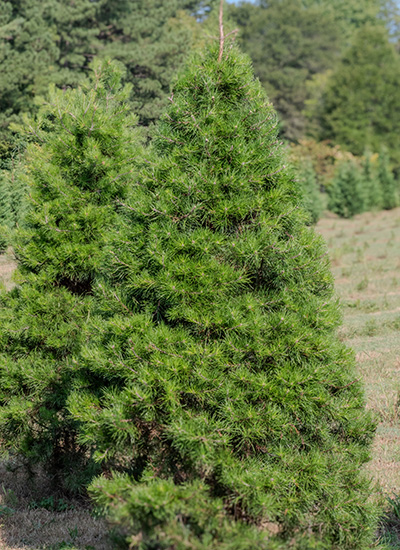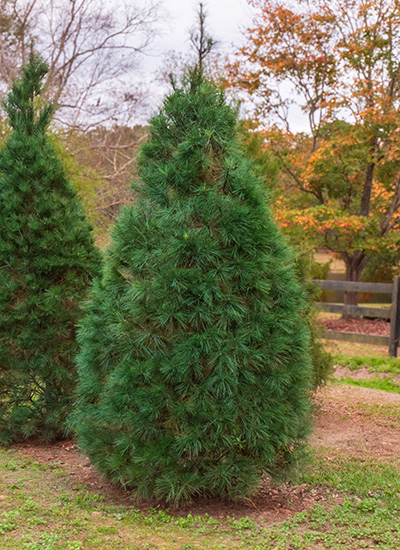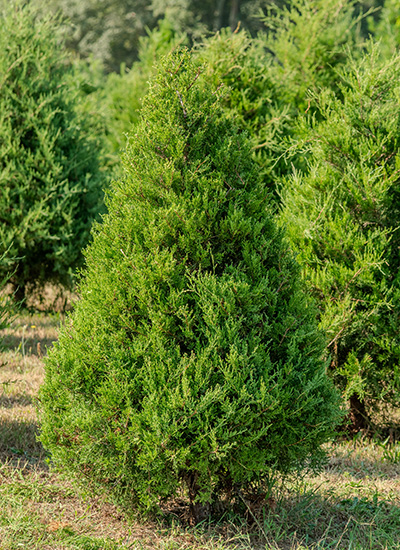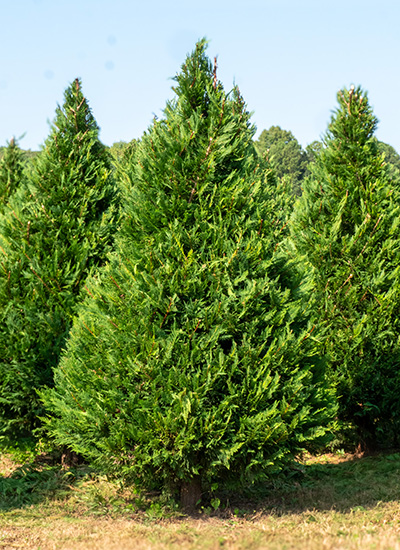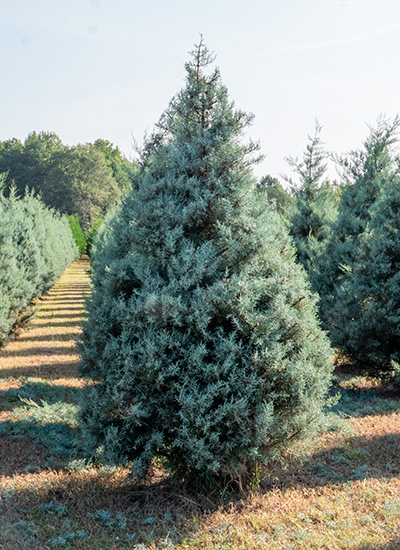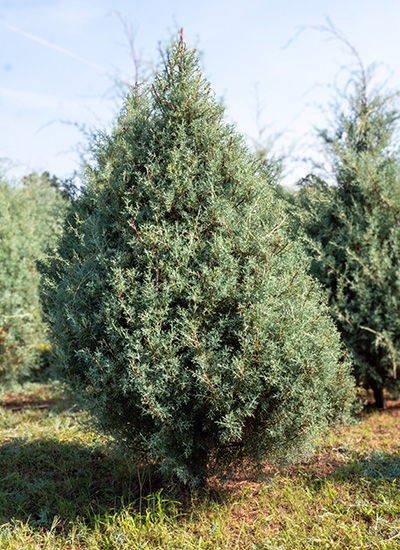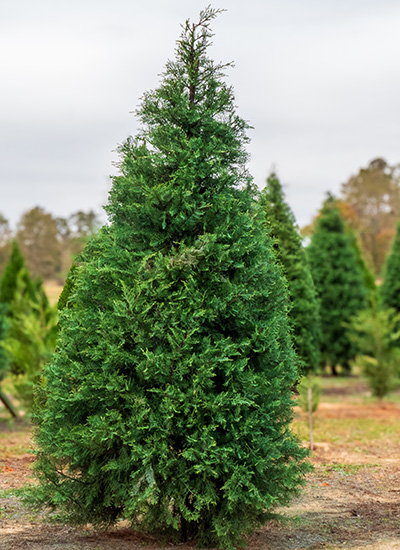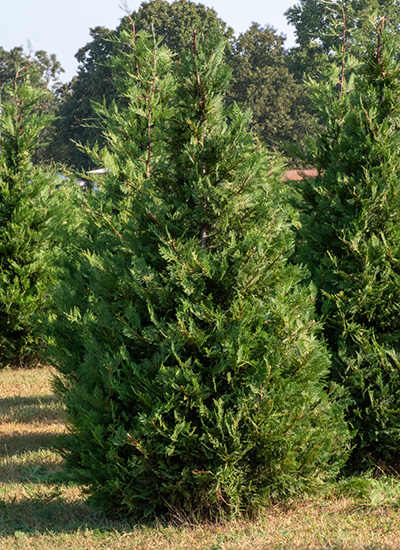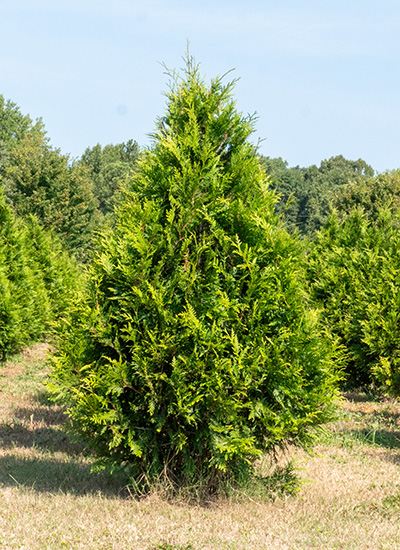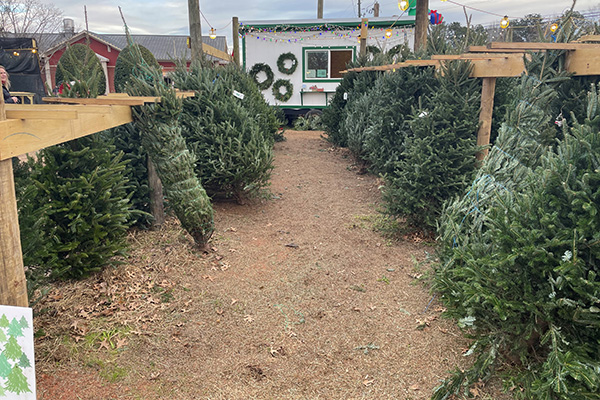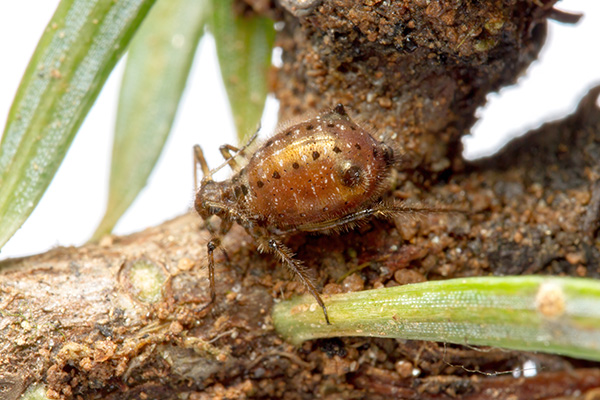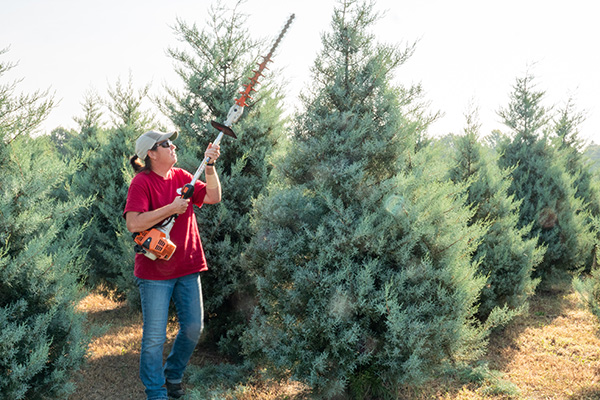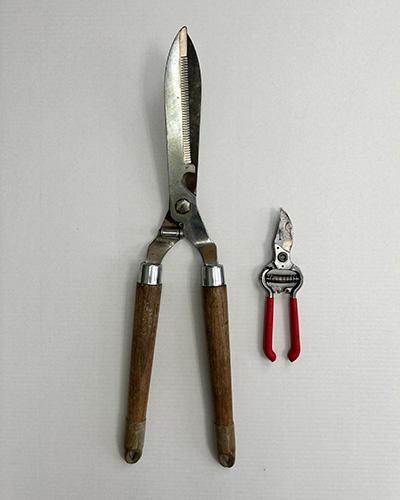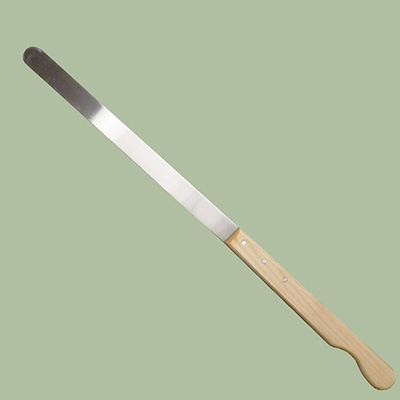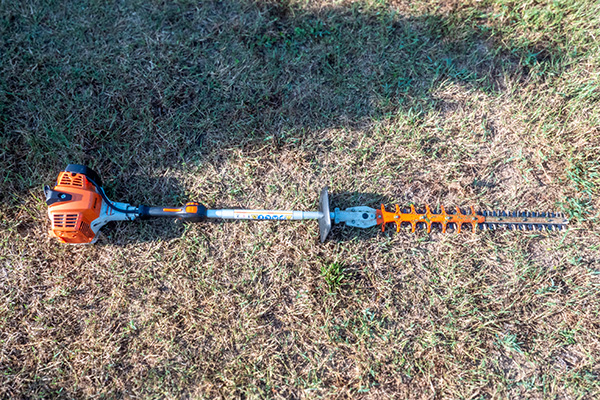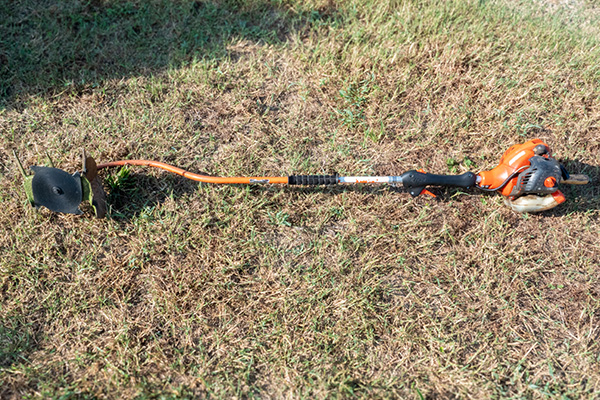Many types of insects, mites, and diseases can damage Christmas trees. Individual or isolated attacks are hard to prevent, but large-scale damage can often be prevented. As with any pest, early detection is key to preventing damage, so regular inspections are key. Healthy trees are less susceptible to pest attacks, and good management can reduce the incidence of pests in a plantation. Selecting seedlings from reputable sources will also reduce the chances of planting diseased stock. Controlling pests early reduces later losses. While a multi-faceted integrated pest management (IPM) plan that includes chemical and cultural controls, coupled with a diverse landscape, would likely be the most economically and ecologically effective way to manage pests, in some cases regular pesticide treatments may be required.
When a problem does occur, accurate identification of the pest is critical, and your local Clemson Cooperative Extension Agent or a South Carolina Forestry Commission forester can help identify the pest and recommend control measures. Below are several insects, mites, and diseases that are commonly encountered in South Carolina Christmas tree farms in South Carolina. Pest species will be limited to those affecting common Christmas tree species listed in the Species for South Carolina section.
The Nantucket pine tip moth (Rhyacionia frustrana) is a pest of Virginia pine. Adult moths lay their eggs on pine needles, and the larvae first feed in the needle and eventually bore into the shoot tip, resulting in tip mortality. Up to four generations can occur each year in South Carolina. Pheromone traps can help determine the best time to apply insecticides to the tree to reduce damage. Infested shoots can be removed by hand, but this may impact tree form.
Image provided by David Coyle, Clemson Extension
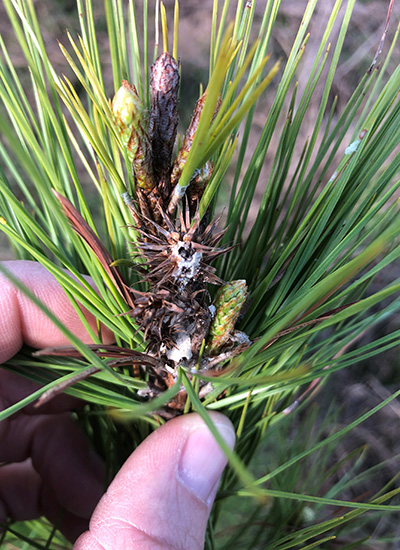
Pine sawflies (Neodiprion spp.) are pests of all pines. Adults are a type of stingless wasp, and their larvae typically feed on new needle growth. Their defoliation can be substantial, even impacting entire trees. Larvae are gregarious, meaning they feed in a large group. If found early, they can be removed by hand. Several contact insecticides are effective against sawflies.
Image provided by David Coyle, Clemson Extension
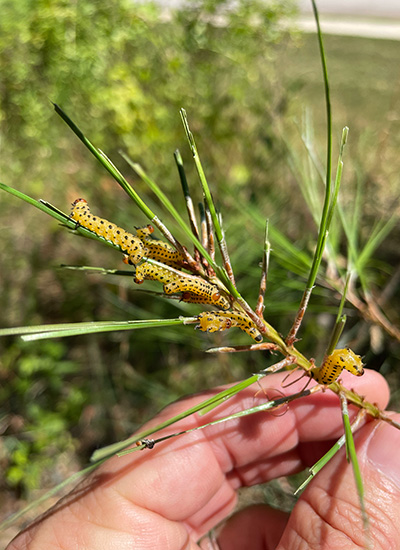
Adult regeneration weevils (Hylobius pales and Pachylobius picivorous) feed on the tender bark on shoots and branches of pines, and this feeding can result in shoot or branch mortality. Adults lay their eggs on freshly cut stumps and larvae feed on the stump and structural roots left behind. One way to reduce the chance of regeneration weevil damage is to delay planting after harvesting, which helps reduce the usability of stumps for weevil larvae. Treating seedlings with a systemic insecticide prior to planting can provide multiple years of protection from adult weevil feeding, and several contact insecticides will also reduce weevil damage.
Image provided by Robert L. Anderson, USDA Forest Service, Bugwood.org
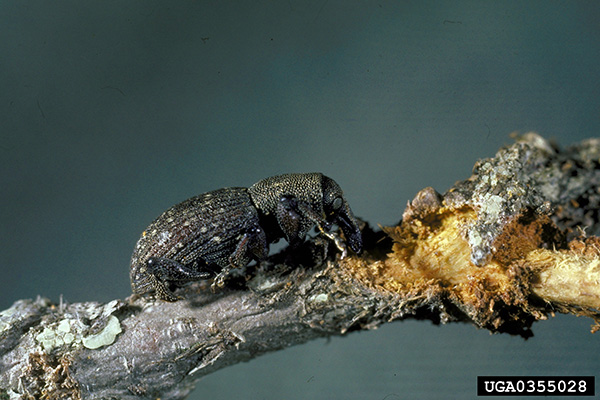
Two adelgid species are sap-feeders on white pine, including the pine bark adelgid (Pineus strobi) and pine leaf adelgid (Pineus pinifoliae) . The pine bark adelgid appears as a small, fluffy, white tuft on stems and branches where it inserts its mouthparts and sucks fluids from the tree. Damage can appear as foliage yellowing, witches' brooms, or black sooty mold. This pest can be managed by applying horticultural oil in late winter before budbreak. Pine leaf adelgids attach to both branches and needles, and cause similar damage (yellowing, sooty mold) as well as occasional shoot dieback. Horticultural oil or systemic insecticides are effective control methods.
Pine bark adelgid
Image provided by Petr Kapitola, Central Institute for Supervising and Testing in Agriculture, Bugwood.org
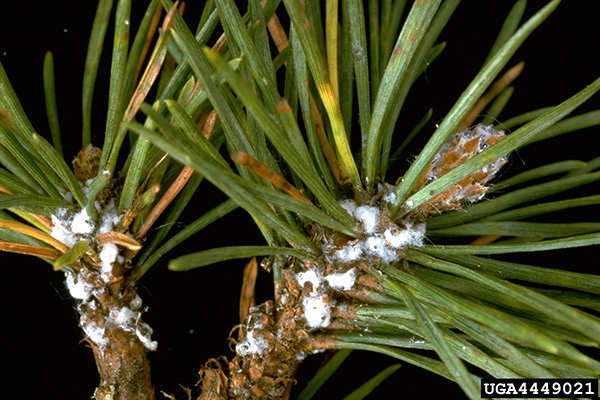
Pine leaf adelgid
Image provided by Steven Katovich, Bugwood.org
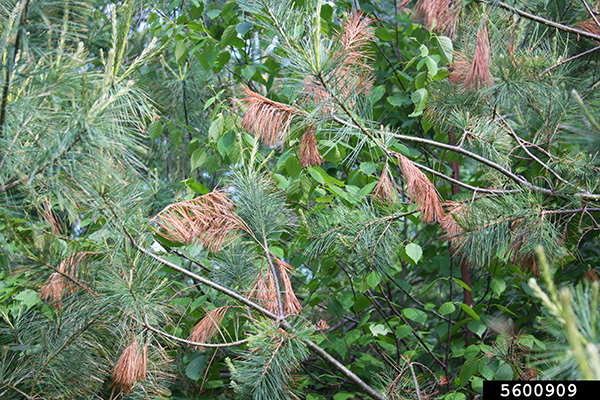
Cinara aphids (Cinara spp.) are large sap-feeding insects that typically do not cause significant damage to white pine trees, though their feeding can lead to needle discoloration due to sooty mold that grows on the waste the extruded. More commonly, they are pests in homes, as they tend to hide deep inside the branches and foliage of a cut tree and become active once the tree is inside a home, leading to large black insects crawling all around. If spotted prior to the tree sale, a broad-spectrum contact insecticide will eliminate them.
Pine spittlebugs (Aphrophora parallela) are known for the white, frothy mass they produce as a protective "bubble" as they feed on fluids in pine shoots. These insects are easily identified via scouting, and they can typically be pruned out by hand. They are rarely a problem but may cause discolored foliage and branch dieback in heavy infestations.
Image provided by Herbert A. 'Joe' Pase III, Texas A&M Forest Service, Bugwood.org
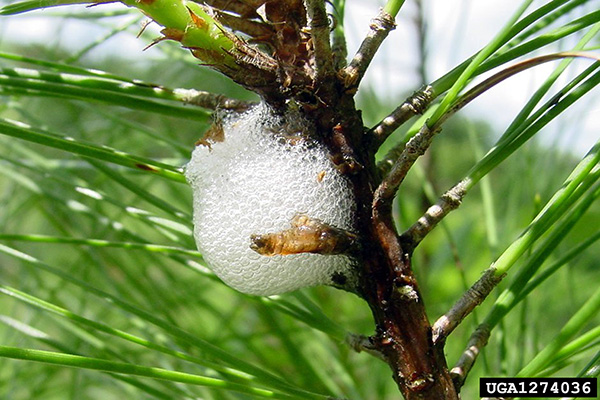
Bagworms (Thyridopteryx ephemeraeformis) are a pest of many different tree species, including cedars, cypress, and arborvitae. Bagworm larvae create small protective enclosures that look like upside down Christmas trees. These bags are made from plant material the larva gathers from the tree on which it is feeding. Bagworm defoliation can permanently disfigure or kill many different species of trees, especially conifers. Bags can be removed by hand, or insecticides (such as those containing Bt, Bacillus thuringiensis) can kill the feeding larvae if applied to foliage they eat.
Image provided by William Fountain, University of Kentucky, Bugwood.org
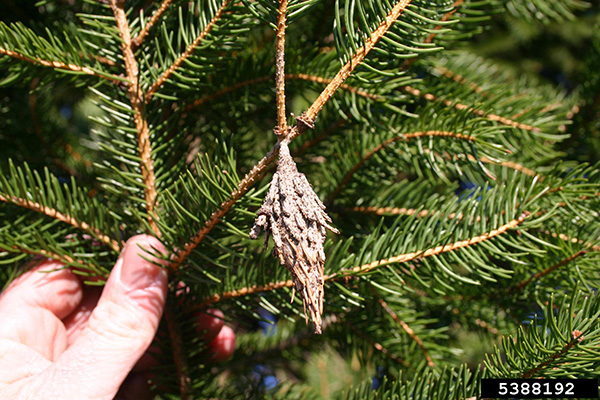
The juniper webworm (Dichomeris marginella) can be a pest on cedars, and the feeding and webbing created by larvae can result in masses of webbed, dead needles. Feeding by larger larvae or high populations can seriously damage cedars. While many natural enemies typically keep populations in check, several broad-spectrum insecticides are also available for control.
Image provided by Connecticut Agricultural Experiment Station, Bugwood.org
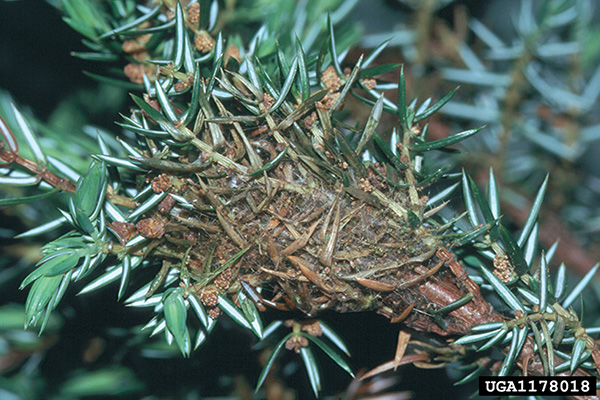
Arborvitae leafminer (Argyresthia thuiella) larvae feed inside the foliage, causing discoloration and death of the affected areas. Sometimes, the entire end of a shoot may be affected. Feeding damage typically appears in mid- to late summer. Moths can be controlled by an application of a broad-spectrum insecticide in early summer, when adults are active. Dead shoots can be pruned out, and these should be destroyed as larvae are likely still inside the foliage.
Image provided by Matt Bertone, NC State University
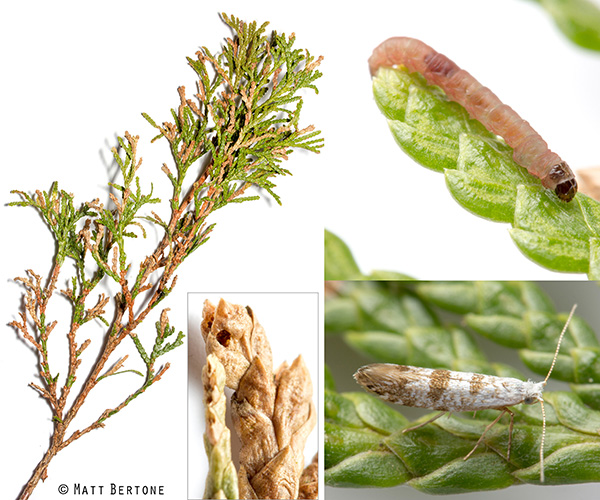
Several species of scale insects [e.g., juniper scale (Carulaspis juniperi), minute cypress scale (C. minima), and Maskell scale (Lepidosaphes pallida) ] feed on Leyland cypress trees. These small sap-feeding insects are immobile as adults and may look like little bumps or spots on needles. Their feeding causes discoloration and reduced growth. Scales are best treated during their "crawler" stage when the newly-hatched insects are mobile – during this time they are susceptible to several insecticides. Identifying the scale species can help determine optimal timing for insecticide application.
Minute cypress scale
Image provided by Matt Bertone, NC State University
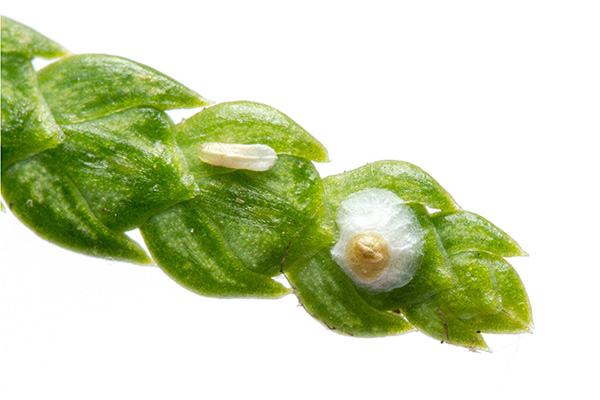
Certain mites (which are more closely related to spiders than insects) can cause damage on Christmas trees grown in South Carolina. White pines are susceptible to eriophyid rust mites (Nalepella spp.) , which cause a bronzing or rusty appearance on the needles as a result ofbecause of mite feeding, and spruce spider mites (Oligonychus ununguis) can impact cypress trees where they cause a speckled appearance on foliage. Damage by mites is caused by the pest feeding on the fluids inside the needles. Management typically includes miticides applied at the proper time.
Eriophyid rust mites
Image provided by Rayanne Lehman, Pennsylvania Department of Agriculture, Bugwood.org
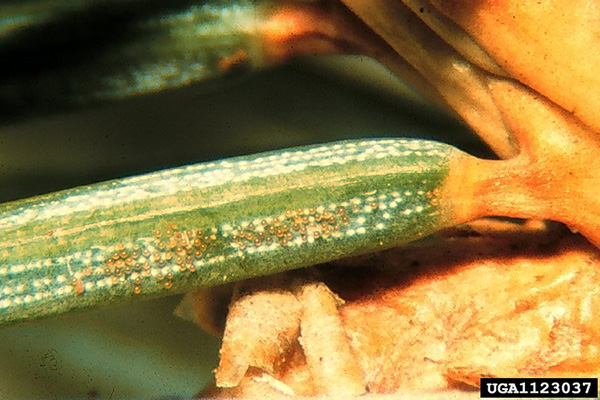
Spruce spider mites
Image provided by Matt Bertone, NC State University
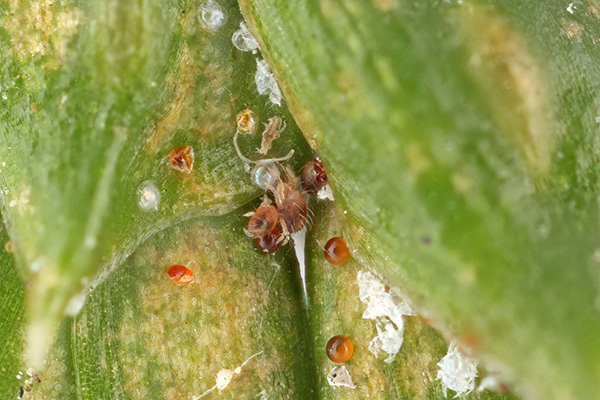
Several fungal diseases can be particularly troublesome on red cedar trees grown in Christmas tree plantations in South Carolina. These include Phomopsis tip blight (Phomopsis juniperovora), Cercospora twig blight (Cercospora sequoiae var. juniperi), and cedar-apple rust (Gymnosporangium juniperi-virginianae) . Tip and twig blight affects small branches and needles, respectively, causing discoloration and mortality of those tissues. Cedar-apple rust, as the name suggests, needs two plant hosts to complete development: cedar (Juniperus spp.) and an apple or crabapple (Malus spp.). Symptoms on cedar trees appear as brown, roundish galls that develop on small twigs and needles. In spring, especially after a rain event, the galls will "sprout" bright orange spaghetti-like growths. Removing the alternate host (apples and crabapples) from around the Christmas tree plantation can help reduce the likelihood of disease, and fungicides can also reduce disease presence.
Phomopsis tip blight
Image provided by Robert L. Anderson, USDA Forest Service, Bugwood.org
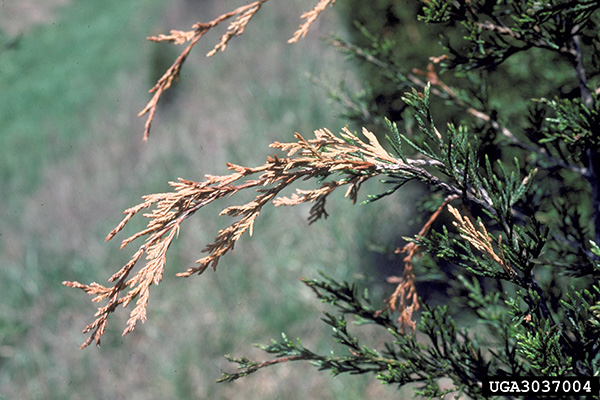
Cedar-Apple Rust
Image provided by David Coyle, Clemson Extension
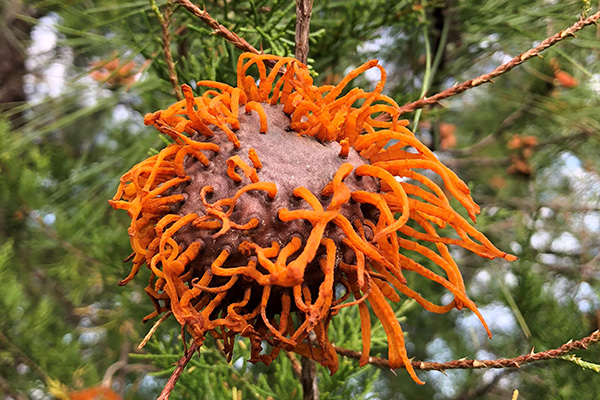
Cypress trees in Christmas tree plantations are susceptible to several diseases that affect roots, stems and branches, and needles. Phytophthora root rot (Phytophthora spp.) is typically seen in areas with poor drainage, as the causal organism moves through water. The disease destroys tree roots, causes dark cankers in large roots or the stem, and leads to the entire tree turning brown, wilting, and eventually dying. Improving drainage is the only effective management tactic.
Seiridium canker (usually caused by the fungus Seiridum unicorne) causes dark lesions or cankers that are often accompanied by oozing sap. These cankers can cause branch dieback, but they can be pruned out to prevent further spread. Botryosphaeria blight (Botryosphaeria dothidea) also causes branch dieback, but a key difference is that needles easily fall off the branch when affected by Botryosphaeria compared with Seiridum, in which needles typically hang onto the branch. Preventing these fungal diseases through proper tree care is the best management strategy, as increasing stress on trees can increase their susceptibility to canker diseases.
Image provided by David Coyle, Clemson Extension
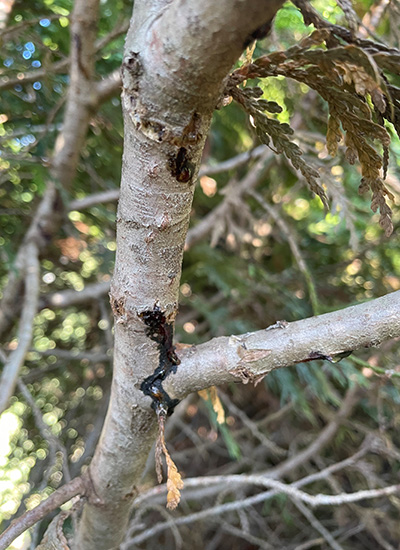
Passalora needle blight (Passalora sequoia) causes needle browning and death that slowly moves up the tree. Allowing adequate air flow around trees and fungicides can help reduce blight presence. Lophodermium needle cast (Lophodermium seditiosum) causes needle discoloration on Virginia pines, as this fungus causes the current year's needles to die and brown from the tips inward. Affected needles can fall off, and fungal fruiting bodies (which are shaped like little footballs) release spores in summer, which can be blown up to the tree to restart the infection cycle.
Lophodermium needle cast
Image provided by Robert L. Anderson, USDA Forest Service, Bugwood.org
